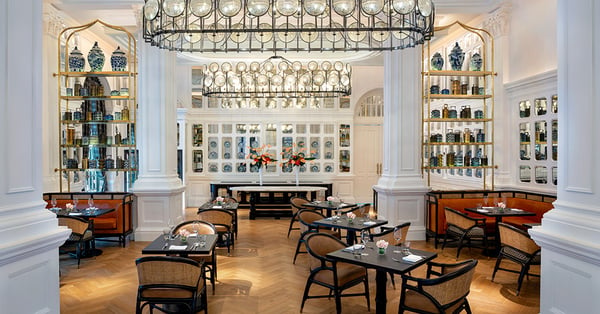One of the main draws of VR across all industries is how it can fully immerse someone in whatever experience has been built for it. Its main goal is to make the viewer feel like they are standing in a brand-new space or environment and that what is going on around them is real. This goes for VR experiences in games, educational content, and other realms of the VR industry. They create a memorable experience for users and allows them to engage with the content on a whole new level.
When it comes to creating or representing a space that exists or is going to exist in real life in VR, some people do have some hesitancy about the accuracy of the recreation, or how it will translate to real life. We understand this feeling at Yulio and we are big on the idea of “seeing is believing.” In this article, we want to go over how Virtual Reality for Interior Design can be created with realism in mind and highlight just how accurate they can be at bringing people’s designs and visions to life.
Building a Good Foundation
When you look at the widespread popularity of VR, the majority of it comes from these experiences in the gaming industry or being used in the “Metaverse”. These experiences use virtual worlds that are fantastical, fictional, or cartoony even. They are designed specifically for use in VR and VR only. These experiences are built using game engines, or other similar tools that allow them to build spaces not necessarily meant to be realistic or include furniture/products that you would see normally.
However, more often now we are seeing VR experiences built to more lifelike standards with photorealism. As we start to see virtual experiences like VR recreations of physical places from the past and present, accuracy has become more important. And with tools such as the Meta Quest which allows you to move about a physical space within VR, developers have been creating spaces that allow users to explore spaces in more detail. Check out the video below where one developer even recreated an almost exact recreation of his apartment in VR and can walk around and explore.
Seeing Designs Come to Life
We wanted to showcase the accuracy of Yulio renders with one of our VR Project showcases below. The Tiffin Room, a famous restaurant at the Raffles Hotel in Singapore was recreated in Autodesk 3DS Max and was then converted into a Yulio project.
Try out exploring the Tiffin Room in Yulio.
With a quick visit to their website, or even watching a YouTube video that showcases the restaurant, you can see that with a Yulio VR project, you get an extremely accurate representation of the physical space. You can see just how lifelike a VR project can be when built with the proper tools and with the minds of architects, designers, and more behind the wheel.
This is an excellent example to show how clearly VR can communicate a project to a client. There isn’t any uncertainty in how the design will translate to real life. VR can more easily communicate complex designs than other traditional visualization methods. By previewing through VR, there won’t be any surprises in the final product and it can help ease friction with a hesitant client. VR visualizations can be a great tool in your problem-solving arsenal.

The real-life tiffin room. Source: Raffles Singapore
An Accurate Translation
At Yulio, accuracy has been important to us from the very beginning as we have developed our software to help translate your designs to VR. Luckily, Yulio can work with existing CAD software which allows the VR experiences it renders to remain as accurate as the designs you create. Simply put, Yulio takes projects designed in CADs projects and translates them into a VR experience. Once converted you choose where your viewers then view your project and allow them to experience your design project in a lifelike way before the final product.
Yulio is compatible with many CAD programs such as SketchUp, Revit, 3DS Max, Solidworks (Visualize Pro), and any other 360 model creation software. And when connected with Yulio, the VR projects created will keep all the dimensions and designs from the original CAD project and display them accurately within Yulio. You aren’t losing any accuracy when bringing it to VR. Just providing a new perspective.
Speaking of perspective, with Yulio, you can set up multiple viewpoints in a Yulio project so that a viewer can see your project from multiple perspectives. You can even set those perspectives at different heights so you could even place the viewer in a chair or behind a desk and allow them to get more of an immersive experience and again make things feel a little more lifelike.
We hope that this article has shown you that VR can be built with accuracy in mind and that what you see is what you get in VR. When showing a VR version of your project to your client you can be sure that it is giving them a realistic representation of the final project and allowing you to set the proper expectation of dimension and design. VR can be a powerful communication tool for any designer in showcasing their project to a client and can help solve problems long before they appear.
Considering adding VR to your business? We have outlined some key areas where this technology will take your workflow to the next level in our whitepaper here. Or get ready to dive into the next phase of visual storytelling and try a 30-Day free trial of Yulio.



.jpeg?width=245&height=150&name=you-x-ventures-6awfTPLGaCE-unsplash%20(1).jpeg)

.jpg?width=245&height=150&name=francesca-tosolini-KJFKCed0YKo-unsplash%20(1).jpg)
.jpg?width=245&height=150&name=BUSINESS%20READY%20VR%2046%20(1).jpg)
